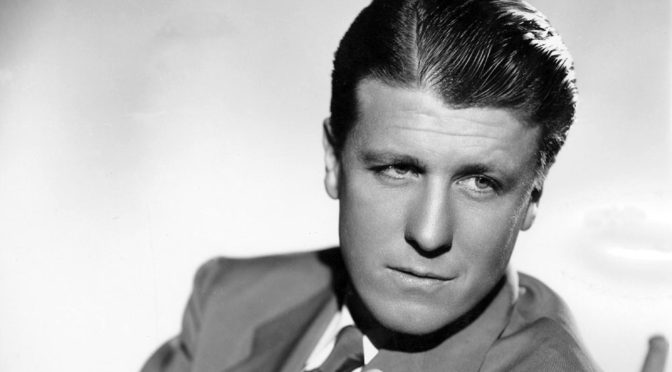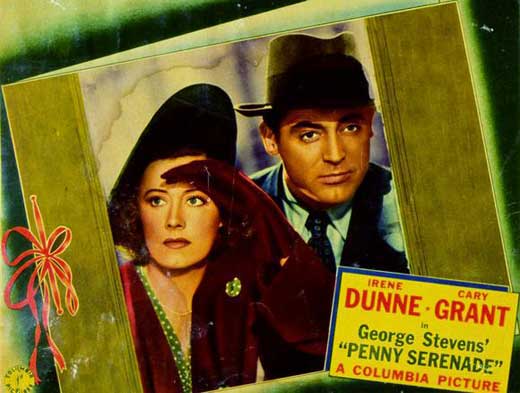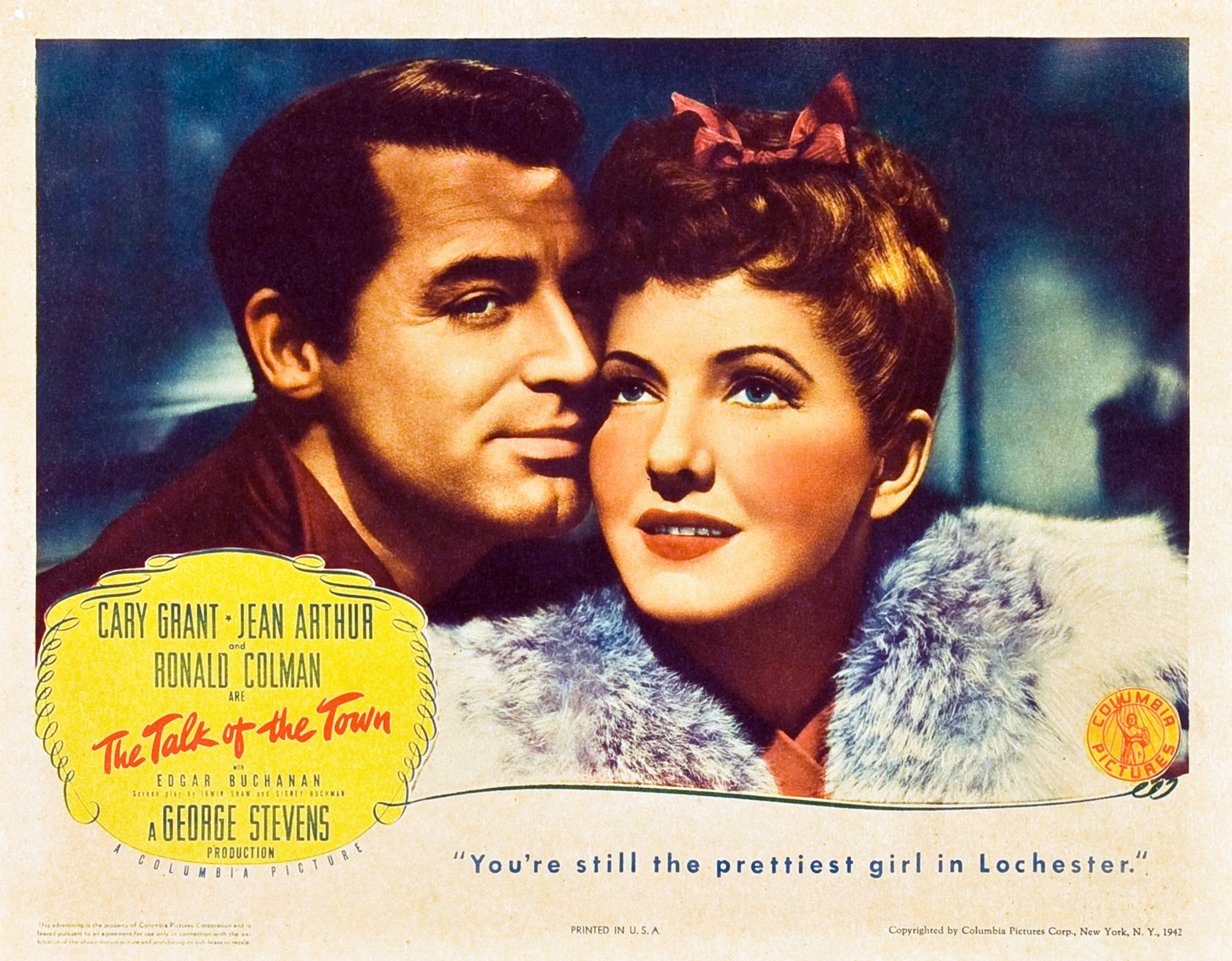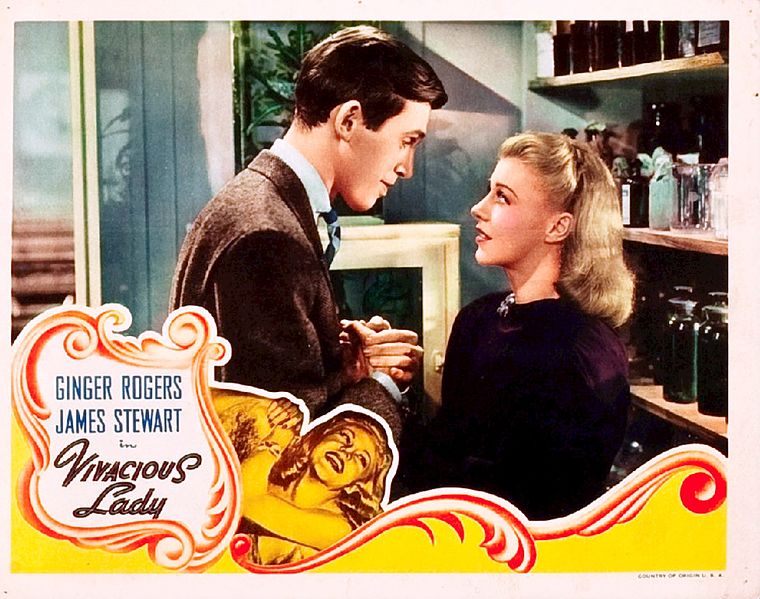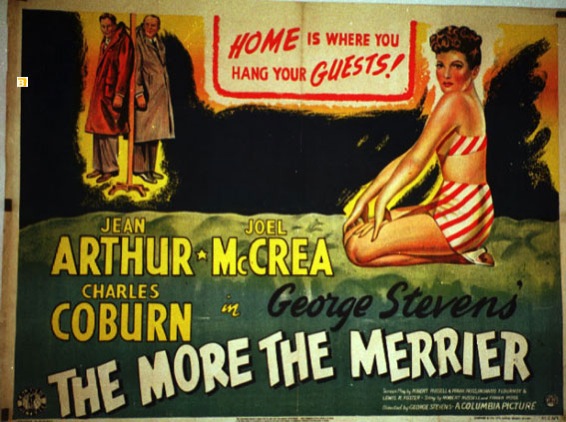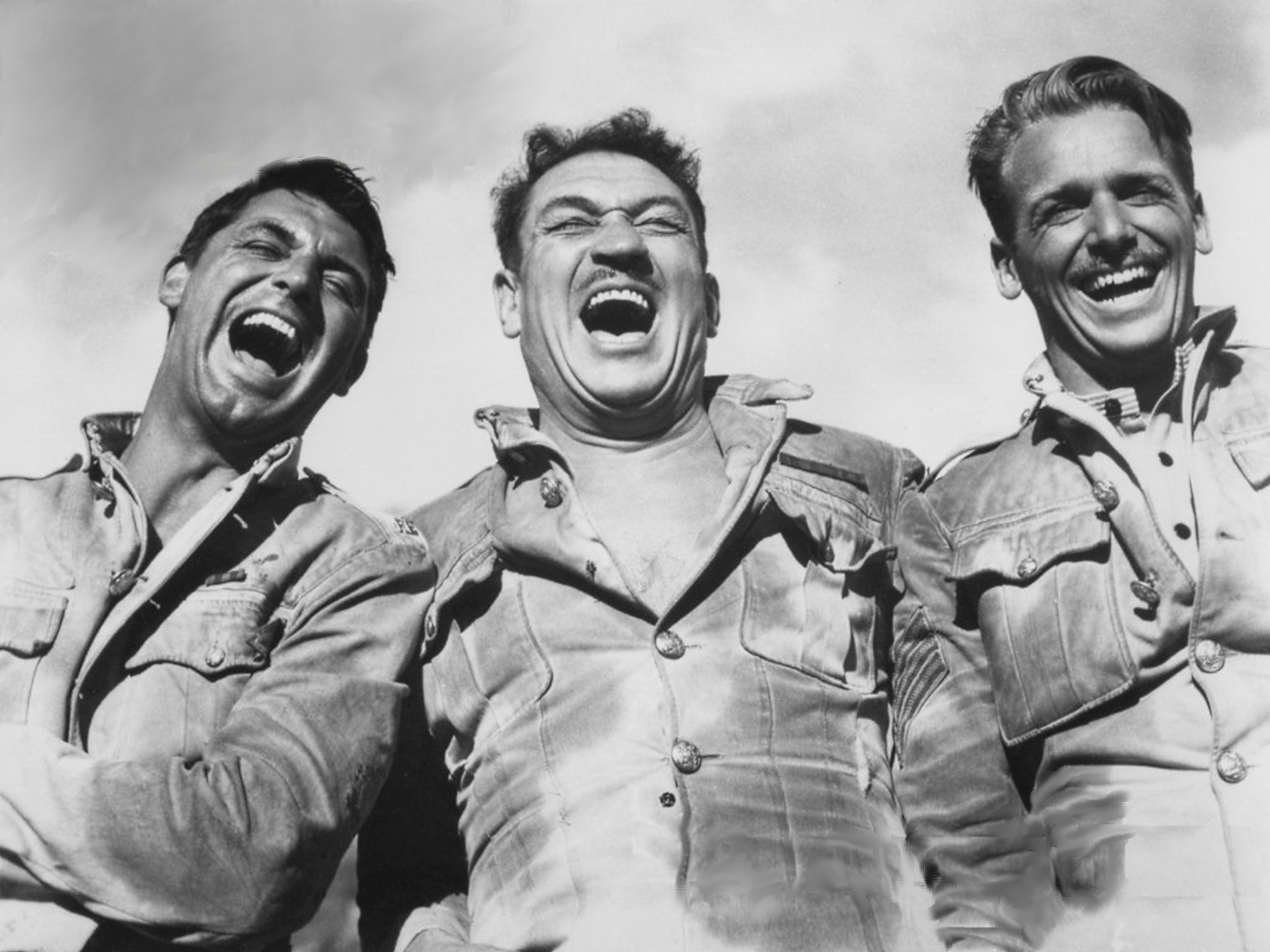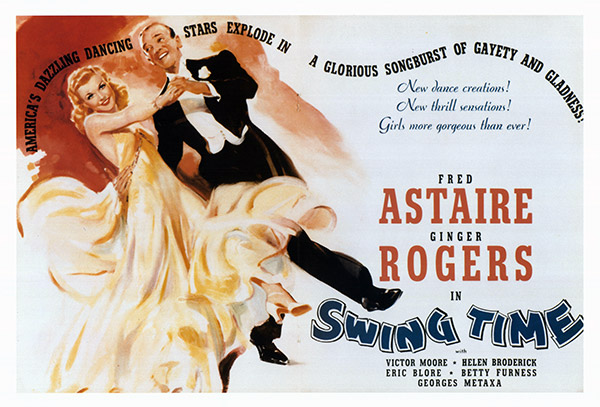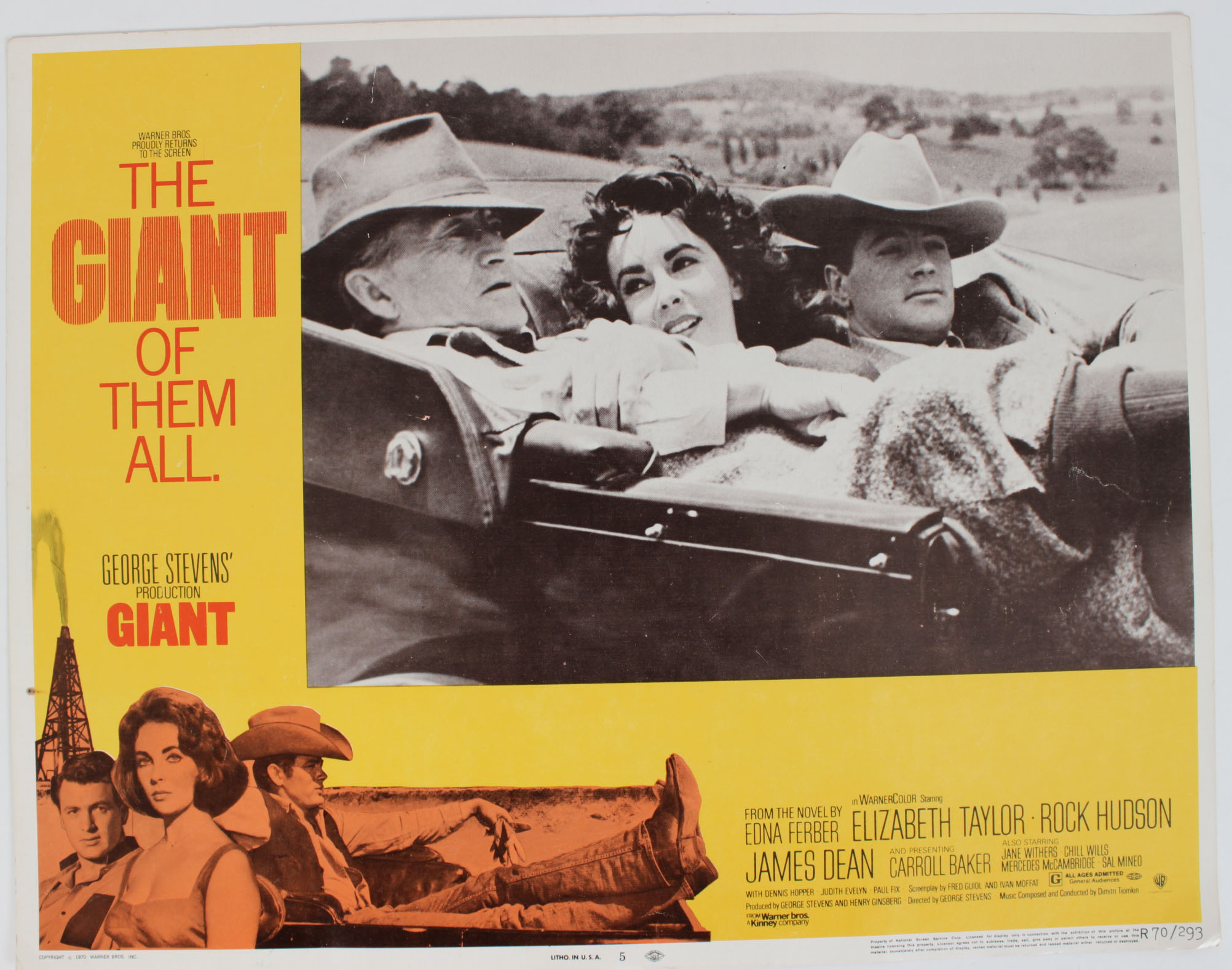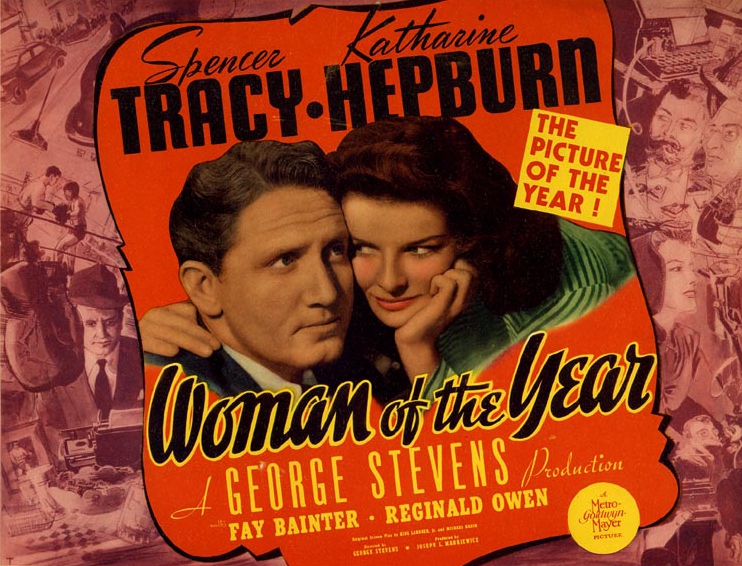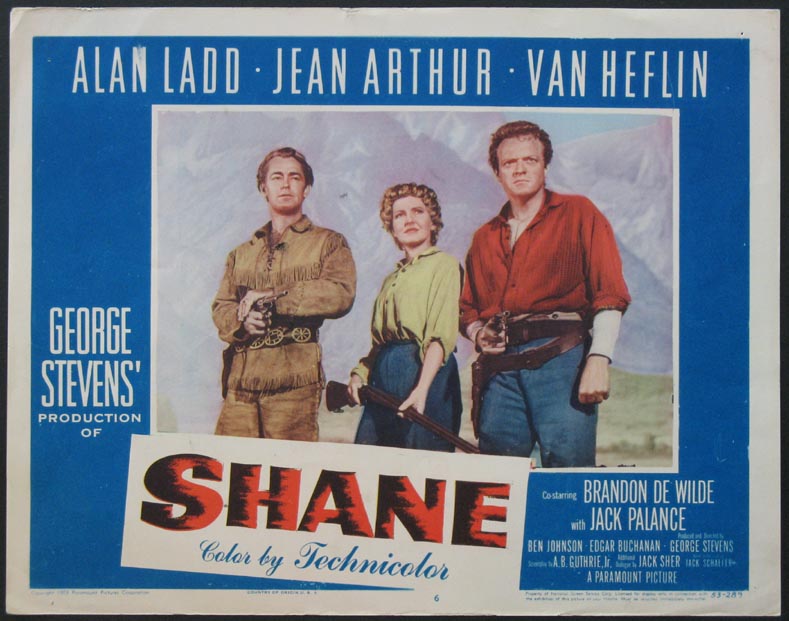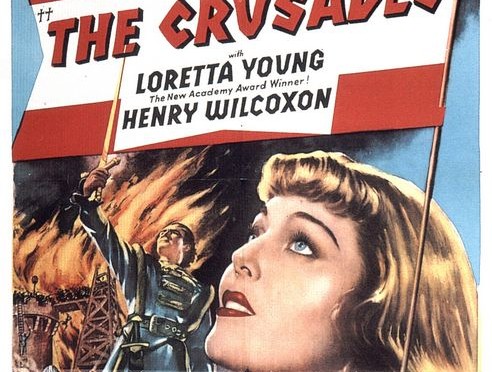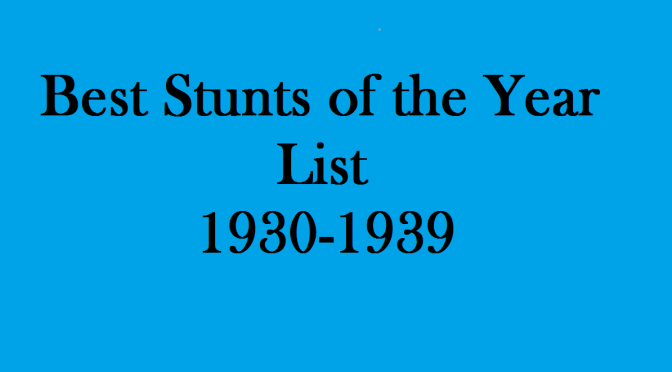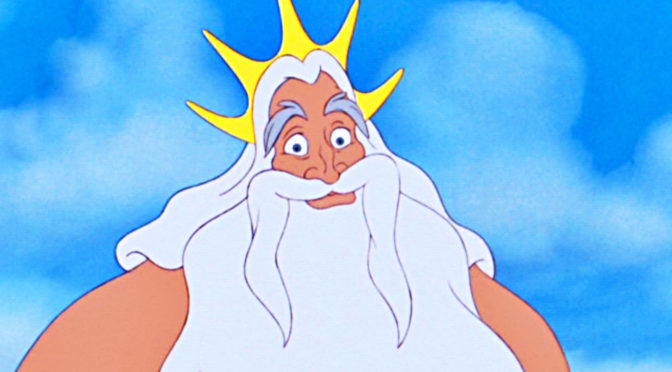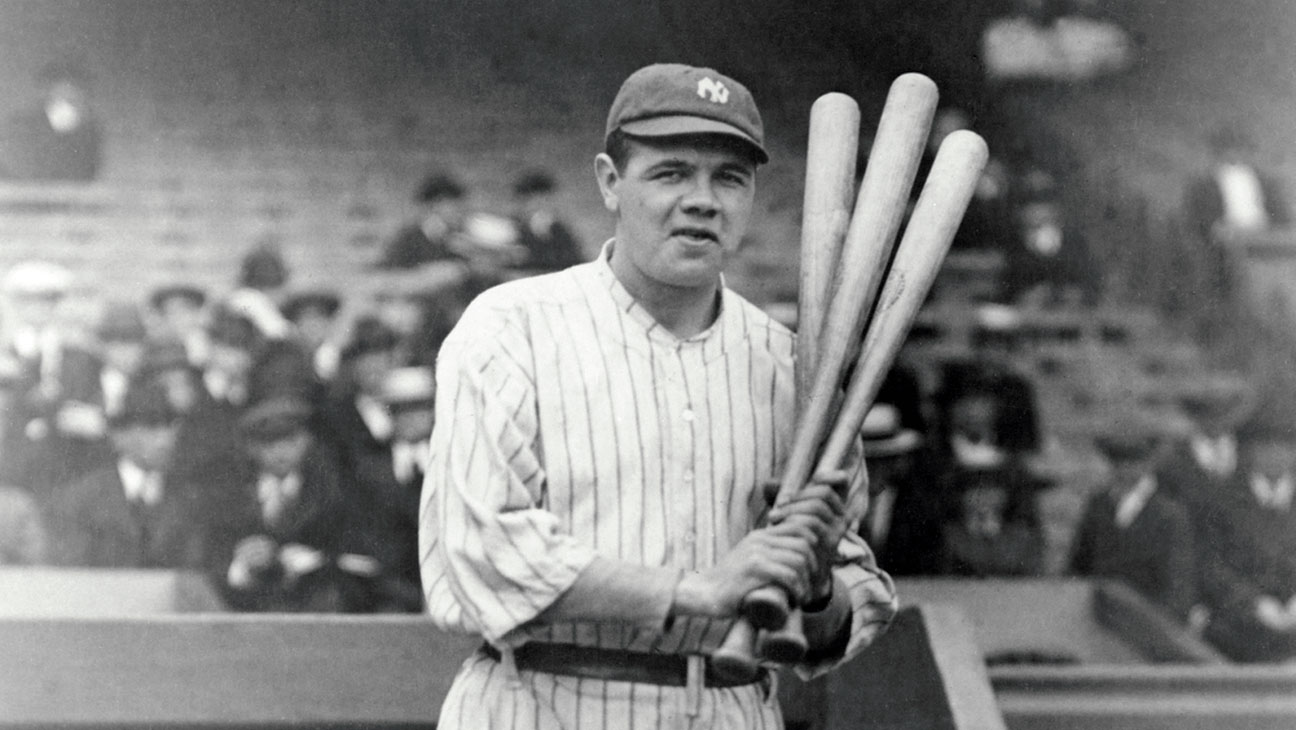One of the studio directors that didn’t ever seem to have just one genre or style, would be the wonderful George Stevens. If he had a style, I would venture to say it was great lighting…but he worked through so many genres comfortably. He was just a very, very good director. His body of work boggles the mind. As a cinematographer at Hal Roach Studios, he is credited with saving the film career of a young British comic by the name of Stan Laurel! Laurel’s pale blue eyes would register as an unnatural white on orthochromatic film, the standard film in use at that time. Stevens knew of panchromatic film and was able to get a supply of it from Chicago. This film was sensitive to blue so that Laurel’s eyes would photograph more naturally. Laurel would use Stevens for his short films at Roach. When Stan Laurel was teamed up with Oliver Hardy, the team make Stevens their cameraman of choice. He would move to features eventually and never look back, making a slew of truly classic films, getting nominated 5 times for an Academy Award and winning twice. Here are my favorite 15 films directed by George Stevens:
I’ll be honest up front and say this particular film is very hard for me to watch because it plays a little too close to home for my comfort, but is a very good film. Written by one of my all-time favorite screenwriters, Morrie Ryskind, the story is about a married couple (Cary Grant and Irene Dunne) and their ups and downs as they try and have a child. In real life, Cary Grant, himself, wouldn’t become a parent until 1966 when he was 62. Irene Dunne often said that this was her favorite film because it reminded her of her own adopted daughter. George Stevens once said about Dunne, “If a director is lucky enough to work with Irene Dunne, his worries disappear. Every scene she’s in matches; she’s the film editor’s delight.”
14 – Vigil in the Night (1940)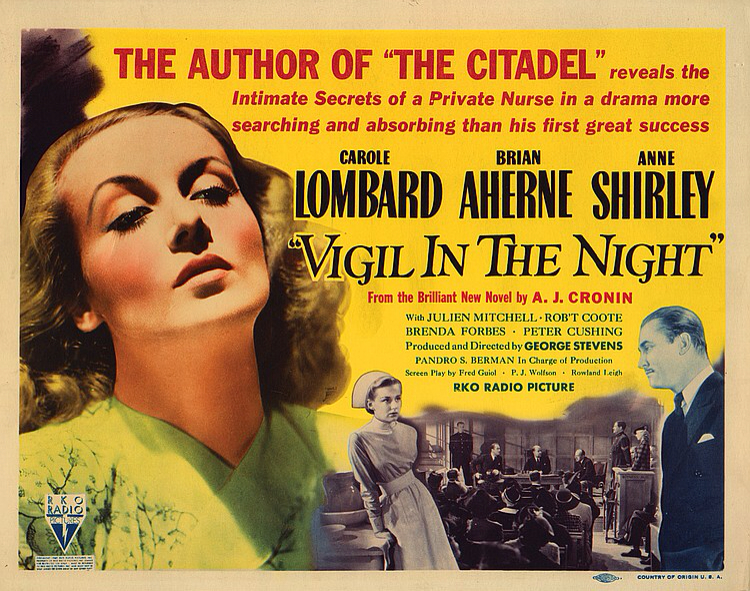
Nurse Anne Lee blames herself for a fatal mistake of her sister Lucy, who also is a nurse. Anne loses her job, and gets a new one at a poorly equipped country hospital. There she falls in love with Dr. Prescott, who is battling with Mr. Bowly, the chairman of the local hospital board, who also makes Anne’s life miserable. But then a virulent epidemic begins…Nurse Anne Lee is played beautifully by Carole Lombard but was held up several weeks when Carole Lombard was admitted to the hospital after suffering a miscarriage. The press dubbed it an ‘appendectomy’ to cover up. She would die tragically only 2 years later in a plane crash at only age 33. This film shows sparks of what she could have become if she continued acting, as she was already brilliant. My favorite Lombard movie would be her last, the incredibly To Be or Not To Be, although My Man Godfrey is fantastic too, also written by none other than…Morrie Ryskind.
13 – A Place in the Sun (1951)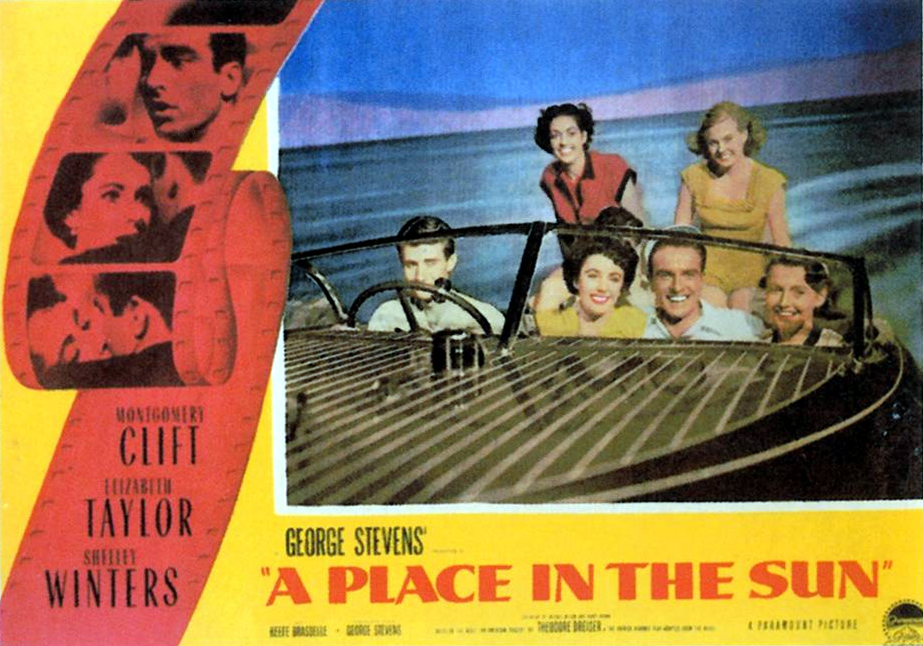
A poor boy gets a job working for his rich uncle and ends up falling in love with two women. Another actor I find to be really under-rated, Montgomery Cliff…if you’ve seen Judgment At Nuremberg, you’ll know what I mean. He silently steals the show in just about every thing he’s in. Another actor who died way too young at only 45. In her autobiography, Shelley Winters described George Stevens’ way of working: “He would discuss the scene, but not the lines, and would photograph the second or third rehearsal so the scene had an almost improvisational quality. Stevens would print the first take, then spend the next three hours minutely rehearsing the scene, then film it again. He explained to me that in this way he often got actors’ unplanned reactions that were spontaneous and human and often exactly right. And often when actors over-intellectualize or plan their reactions, they aren’t as good.” George Stevens was also a firm believer in running rushes at night, and having the actors in attendance. As Shelley Winters said, “Stevens would print several takes of each scene and then explain to us why one was better than the other. The whole experience was a joy.”
An escaped prisoner (Cary Grant) and a stuffy law professor (Ronald Colman) vie for the hand of a spirited schoolteacher (Jean Arthur). Stevens would say of Arthur, “One of the greatest comediennes the screen has ever seen. When she works, she gives everything that’s in her, and she studies her roles more than most of the actresses I’ve known.” The studio considered filming two different endings, with Jean Arthur pairing off with Cary Grant in one, and with Ronald Colman in the other, and letting the audience decide by voting in sneak previews which one they preferred. However, in the papers of director George Stevens, all the screenplay drafts contained the current ending. I won’t tell you who she ends up with.
11 – Alice Adams (1935)
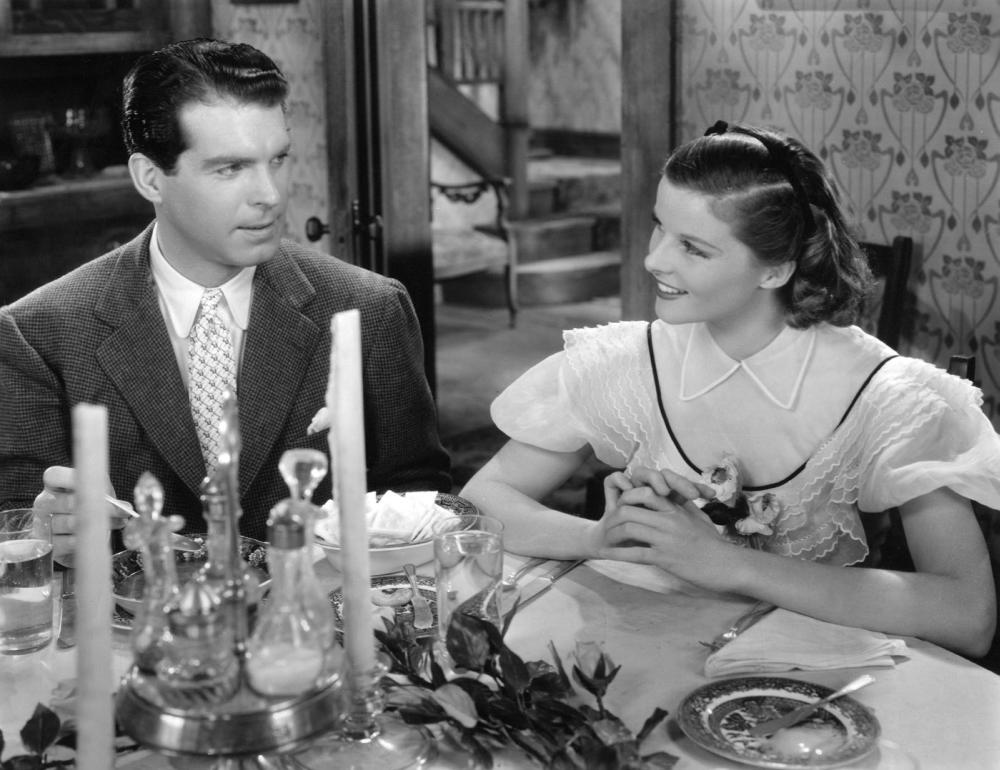
The misadventures of two social-climbing women in small town America. Katharine Hepburn always viewed Alice as one of her personal favorite roles. Katharine Hepburn credits director George Stevens for her change in the public’s perception, by helping her, in “Alice Adams”, portray more warmth and vulnerability than she had ever shown previously. The original script ending followed the ending of the novel, in which Alice grows up and gets a job – she does not get Arthur in the end. Katharine Hepburn and George Stevens both much preferred this ending, but the studio made Stevens film a happier ending in which Alice and Arthur end up together, which is seen in the final cut. I have to say, I’m so glad they did this, as I’m a romantic at heart and love the ending as it stands.
A professor (James Stewart) marries a nightclub singer (Ginger Rogers), much to the consternation of his family and friends back home. Ginger Rogers recommended Jimmy Stewart for this film, even though they had not worked on a film together previously. The two were dating at the time, and with Rogers being one of RKO’s biggest stars, she got her way. Rogers worked with Stevens previously, two years earlier on Swing Time (1936).
9 – A Damsel in Distress (1937)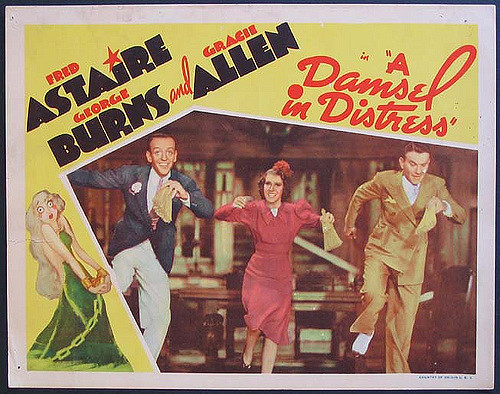
Lady Alyce Marshmorton (Joan Fontaine) must marry soon, and the staff of Tottney Castle have laid bets on who she’ll choose, with young Albert wagering on “Mr. X.” After Alyce goes to London to meet a beau (bumping into dancer Jerry Halliday – Fred Astaire – instead), she is restricted to the castle to curb her scandalous behavior. Albert then summons Jerry to Alyce’s aid in order to “protect his investment.” This movie is especially good because of the co-stars, George Burns and Gracie Allen! After learning that Fred Astaire wanted Burns and Allen to audition for him, George Burns hired a vaudeville dancer he knew to choreograph a complex routine with whisk brooms. Astaire enjoyed the performance by George and Gracie so much that he insisted on working it into the film!
8 – Greatest Story Ever Told (1965)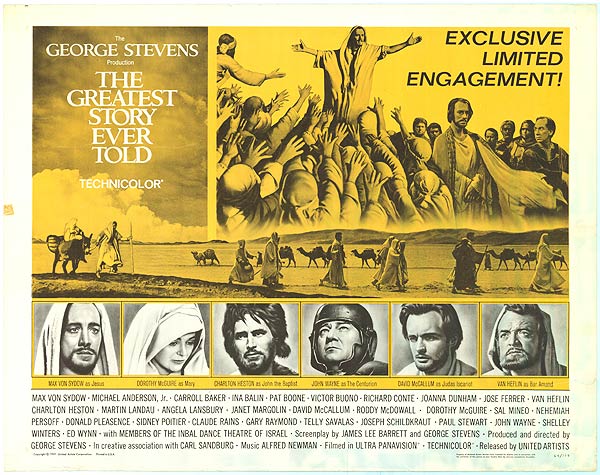
Director George Stevens shot The Greatest Story Ever Told in the American Southwest, in Arizona, California, Nevada and Utah. Pyramid Lake in Nevada represented the Sea of Galilee, Lake Moab in Utah was used to film the Sermon on the Mount, and California’s Death Valley was the setting of Jesus’ 40-day journey into the wilderness. Stevens explained his decision to use the United States rather than in the Middle East or Europe in 1962. “I wanted to get an effect of grandeur as a background to Christ, and none of the Holy Land areas shape up with the excitement of the American Southwest,” he said. “I know that Colorado is not the Jordan, nor is Southern Utah Palestine. But our intention is to romanticize the area and it can be done better here.” Forty-seven sets were constructed, on location and in Hollywood studios, to accommodate Stevens’ vision.
During the World War II housing shortage in Washington, two men (Charles Coburn and Joel McCrae) and a woman (Jean Arthur) share a single apartment and the older man plays Cupid to the other two. Jean Arthur was getting into trouble with Columbia Pictures because she kept turning down roles. Rather embarrassed about this, she contacted her friend Garson Kanin and asked him to pen her something that she could take to the studio. Kanin was out of work at the time and readily accepted her proposal which Arthur ended up paying for out of her own pocket. Joel McCrea didn’t originally think he was right for the part of Joe and thought Cary Grant would have been better suited. Ironically, Grant would appear in the remake, Walk Don’t Run (1966), albeit in the Charles Coburn role. This was George Stevens’ last picture for Columbia before he joined the Army as chief of the combat photographic unit, where he shot several films for the US war effort.
I’ve written about this film before. I love the story about the three soldiers but am not thrilled that they cast a middle-aged white guy in the kid’s role, Gunga Din. In 19th century India, three British soldiers and a native waterbearer must stop a secret mass revival of the murderous Thuggee cult before it can rampage across the land. Sabu was first choice to play Gunga Din, he would have been great; when it became clear he was unavailable, Sam Jaffe was hired in his place. At the time he was playing water-boy Gunga Din, Sam Jaffe was 47 years old. In an interview years later, Jaffe (a Jewish Russian-American) was asked how he was able to play an Indian Muslim. Jaffe replied he kept telling himself to “Think Sabu.” Other than this, it is a great film. And it was very popular, it was second only to Gone with the Wind (1939) as the biggest money-maker of 1939.
5 – Diary of Anne Frank (1959)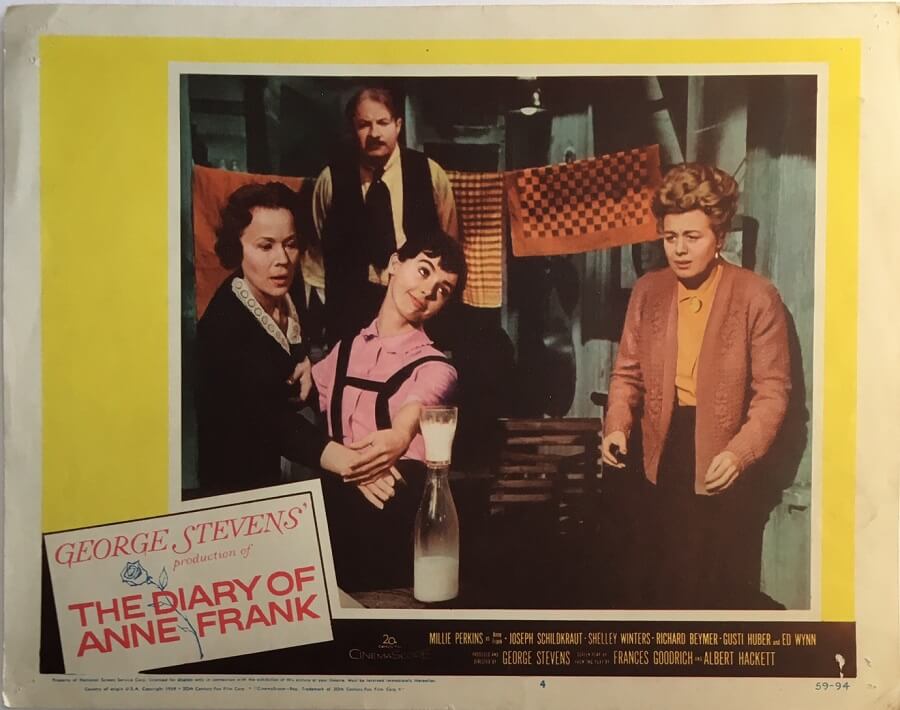
Harrowing story of a young Jewish girl who, with her family and their friends, is forced into hiding in an attic in Nazi-occupied Amsterdam. The second of three George Stevens films in which Shelley Winters starred. The others are A Place in the Sun and The Greatest Story Ever Told. She received Oscar nominations for both A Place in the Sun and The Diary of Anne Frank, winning the Academy Award for Best Supporting Actress for the latter. Shelley Winters donated the Best Supporting Actress Academy Award she won for the role of Mrs. Van Daan to the Anne Frank Museum in Amsterdam, after promising Otto Frank that she would do so if she were to win the award. It remains on permanent display in the museum to this day.
My favorite Fred and Ginger movie! A performer and gambler travels to New York City to raise the $25,000 he needs to marry his fiancée, only to become entangled with a beautiful aspiring dancer. Ginger Rogers would go on to say, “I adore the man. I always have adored him. It was the most fortunate thing that ever happened to me, being teamed with Fred: he was everything a little starry-eyed girl from a small town ever dreamed of.” Then, when asked about Ginger, Fred would return the compliment, “Excuse me, I must say Ginger was certainly the one. You know the most effective partner I ever had. Everyone knows. That was a whole other thing what we did…I just want to pay a tribute to Ginger because we did so many pictures together and believe me it was a value to have that girl…she had it. She was just great!”. This was Ginger Rogers’ favorite of her films with Fred Astaire.
Arguably, the best of James Dean’s 3 films. Sprawling epic covering the life of a Texas cattle rancher (Rock Hudson) and his family and associates. When Rock Hudson was cast, director George Stevens asked him whom he preferred as his leading lady, Grace Kelly or Elizabeth Taylor. Hudson picked Taylor, who was cast and ended up becoming lifelong friends with Hudson. James Dean called the shooting style of director George Stevens the “around the clock” method, because Stevens would film a scene from as many different angles as possible, which made everything seem to take longer to do. James Dean finished principal photography on Friday September 23, 1955. He died in a car crash a week later.
What a great movie, rival reporters Sam (Spencer Tracy) and Tess (Katherine Hepburn) fall in love and get married, only to find their relationship strained when Sam comes to resent Tess’ hectic lifestyle. As Katharine Hepburn’s close friend and frequent director, George Cukor was a natural choice to direct, but for her first film with Spencer Tracy, Hepburn wanted Tracy to be as comfortable as possible, so as a quasi-producer, she hired George Stevens, who had directed her in Alice Adams. As Hepburn said, “I just thought he (Tracy) should have a big, manly man on his team – someone who could talk about baseball.” Cukor (who was openly gay and known for his friendships with actresses) would later become a good friend of Tracy and would direct both actors in Keeper of the Flame (1942), Adam’s Rib (1949) and Pat and Mike (1952).
A weary gunfighter (Alan Ladd) attempts to settle down with a homestead family, but a smoldering settler/rancher conflict forces him to act. This film is always in the top ten of any list about the best westerns ever filmed. Ranked #3 on the American Film Institute’s list of the 10 greatest films in the genre “Western” in June 2008. Jean Arthur, then aged 50, came out of semi-retirement to play Marian Starrett, largely as a favor to her friend, director George Stevens. She would retire completely from the film business after this picture. Having witnessed during his WW2 service the profound effects a bullet could have on a man, realism was important to George Stevens during the making of the film. This therefore is one of the first movies to use stunt wires to pull the actors or stuntmen backwards to simulate when they’ve been shot. George Stevens referred to this film as being his war movie.

